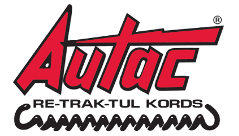Straight wire cables are among the most widely used forms of electrical and communication wiring in modern infrastructure. Their simplicity, reliability, and ease of installation make them suitable for residential, commercial, industrial, and specialized applications. These cables are designed to carry electrical current or data signals in a straight, uniform path without complex twists or shielding structures. Understanding their construction, materials, applications, performance characteristics, and safety requirements is essential for electricians, engineers, and students of electrical technology.
Introduction To Straight Wire Cables
A straight wire cable typically consists of one or more conductive cores running parallel inside an insulating sheath. Unlike twisted pair cables, where conductors are twisted to reduce electromagnetic interference, straight wire cables maintain a uniform linear orientation. This construction is ideal for simple current transmission, grounding, low-frequency signals, and internal wiring in devices or electrical systems.
These cables are commonly used in building wiring, appliances, automotive systems, power distribution boards, battery connections, control panels, and low-voltage circuits. Their design is optimized for durability, conductivity, thermal performance, and mechanical strength.
Construction And Materials
Straight wire cables vary in size, insulation type, number of cores, and material composition. The performance of any cable largely depends on these factors:
1. Conductor Material
The conductor is the central core responsible for carrying electrical current. Common materials include:
-
Copper:
The most widely used conductor due to its high conductivity, flexibility, corrosion resistance, and ability to withstand thermal stress. -
Aluminum:
Used in larger cables for power distribution due to its light weight and lower cost, but it has higher resistance compared to copper. -
Tinned copper:
Copper coated with a thin layer of tin, increasing corrosion resistance—ideal for marine or high-moisture environments.
2. Insulation
The insulation surrounds the conductor to prevent electrical leakage, short circuits, and accidental contact. Popular insulation materials include:
-
PVC (Polyvinyl Chloride):
Flexible, cost-effective, flame-retardant, and suitable for general wiring. -
XLPE (Cross-linked Polyethylene):
Offers higher temperature resistance, durability, and improved current-carrying capacity. -
Rubber Insulation:
Used in flexible cables for industrial and outdoor applications.
3. Sheath
Some straight cables include an outer protective sheath designed to enhance mechanical protection. Sheaths can be made of PVC, rubber, or polymer compounds that resist UV radiation, oils, chemicals, and abrasion.
4. Number of Cores
Straight wire cables may have:
-
Single-core (one conductor)
-
Twin-core (two parallel conductors)
-
Multi-core (three or more conductors running straight)
The choice depends on application requirements, voltage levels, and system complexity.
Types Of Straight Wire Cables
Straight wire cables come in various types based on construction, voltage rating, and application:
1. Single-Core Straight Wire Cables
Used for internal electrical circuits, grounding, and low-voltage power supply. Simple and economical.
2. Twin Flexible Flat Cables
Commonly found in household appliance wiring, such as lamps, fans, and low-power extensions.
3. Automotive Straight Wires
Heat-resistant cables used in vehicles for lighting, sensors, and battery connections.
4. Control Panel Straight Wires
Used for instrumentation and control systems where clear, organized wiring is essential.
5. High-Voltage Straight Cables
Used in power transmission; constructed with layered insulation and sometimes armored for protection.
Applications Of Straight Wire Cables
Straight wire cables play a crucial role in multiple fields:
1. Residential Electrical Wiring
Used in lighting circuits, switchboards, fans, appliances, and internal wiring of devices.
2. Commercial Installations
Found in HVAC systems, communication lines, control systems, and electrical panels.
3. Industrial Applications
Used in machinery, control cabinets, sensors, and power distribution systems.
4. Automotive and Transportation
Important for vehicle wiring harnesses, batteries, headlights, and ECU connections.
5. Communication Networks
Certain types of straight copper wires are used in telephone lines and older communication systems.
6. Renewable Energy Systems
Solar installations often use straight DC wires for panel-to-controller and controller-to-battery connections.
Advantages Of Straight Wire Cables
1. Easy Installation
Their linear structure makes them simple to lay, route, and terminate.
2. Cost-Effective
Straight wire cables are cheaper than shielded or twisted alternatives.
3. Wide Availability
Available in numerous sizes, insulations, and colors to support different wiring standards.
4. Low Electrical Loss
Copper straight wires ensure minimal resistance and efficient power transfer.
5. Flexibility
Certain types are highly flexible, making them suitable for moving parts like robotic systems or appliances.
6. Durability
When manufactured with strong insulation and sheathing, straight wires withstand harsh environments.
Limitations Of Straight Wire Cables
1. Susceptibility to Interference
Because the wires aren’t twisted or shielded, they may pick up electromagnetic or radio-frequency interference.
2. Limited High-frequency Use
They are not ideal for data transmission requiring precision, like Ethernet or high-speed communication.
3. Mechanical Vulnerability
Cheaper variants may crack or degrade when exposed to extreme heat, chemicals, or UV radiation.
Safety Standards And Considerations
Straight wire cables must comply with national and international standards such as IEC, NEC, BS, or local electrical codes. Safety considerations include:
-
Proper insulation rating for the voltage
-
Correct wire gauge (thickness)
-
Flame-retardant and heat-resistant materials
-
Safe routing to avoid physical damage
-
Use of appropriate connectors, terminals, and protective conduits
Failure to follow these guidelines can result in overheating, fire hazards, short circuits, or equipment failure.
Conclusion
Straight wire cables are essential components in electrical systems across homes, industries, and electronic devices. Their simple parallel structure provides reliable power transmission, ease of installation, and versatility. While they may not be suited for high-frequency data transmission or environments with heavy interference, their advantages in cost, durability, and performance make them indispensable in everyday applications. A proper understanding of their types, construction, and usage ensures safe and efficient electrical installations.




Recent Comments